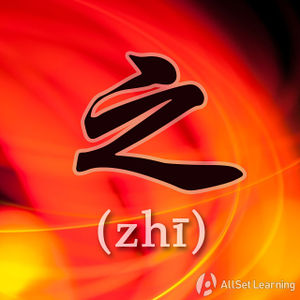Expressing possession with "zhi"
| This article is a stub. Editors can help the Chinese Grammar Wiki by expanding it. |
\r\n之 is one of the characters from classical Chinese that has come into common usage. It a formal written way to express possession\r\n== Structure ==\r\n之 functions similarly to 的 in that it indicates possession. Remember that 之 is used this way formally, and most of the time it is used for titles of works, poems, formal documents etc.\r\n
Noun + 之 + Noun
\r\n=== Examples ===\r\n
- 害 人 之 心 不 可 有,防 人 之 心 不 可 无。
- 这些 解决 问题 的 方式 仍然 有 不足 之 处。
- 粗心 之 害 大于 无知。
之 cannot simply take the place of any 的. Pay attention to the kinds of words it can be paired with. \r\n==Sources and Further Reading==
Books
- 卓越汉语-公司实战篇 (p. 199) →buy\r\n



